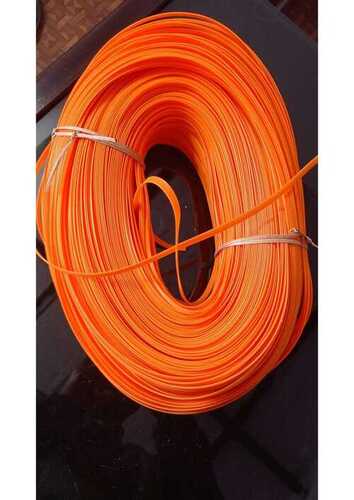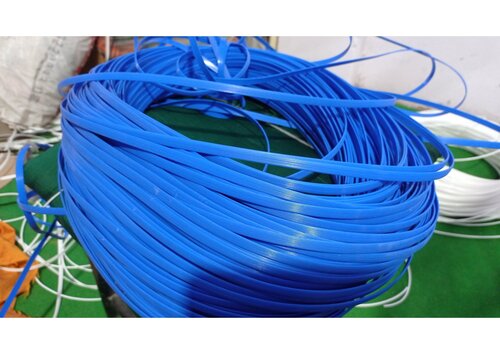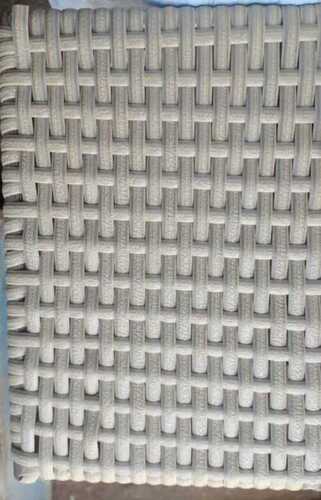Rattan Material
Rattan Material Trade Information
- Minimum Order Quantity
- 100 Kilograms
- Payment Terms
- Cash Advance (CA), Cash in Advance (CID)
- Supply Ability
- 500 Kilograms Per Week
- Delivery Time
- 2 Days
- Sample Available
- Yes
- Sample Policy
- Sample costs shipping and taxes has to be paid by the buyer
- Packaging Details
- as per customer requirement
- Main Domestic Market
- All India
About Rattan Material
Rattan is a natural, versatile material derived from climbing palms, primarily found in the tropical forests of Southeast Asia. It is widely used in furniture, handicrafts, and building materials. Here is a detailed description of rattan material:
1. Origin and Characteristics
-
Plant: Rattan is a climbing palm, and unlike trees, it does not branch and has a constant diameter from top to bottom. It grows in a vine-like habit, scrambling over other vegetation to reach sunlight. Some species can grow up to hundreds of meters long.
-
Stems: The stems of rattan are solid all the way through, which is a key difference from bamboo, which is hollow. The canes are typically cylindrical and smooth, ranging from pale yellowish-brown to dark brown in color. They have nodes along the stem, giving them a segmented appearance.
-
Sustainability: Rattan is considered a sustainable and renewable resource because harvesting the canes does not kill the plant. The root system remains intact, allowing the plant to continue growing and producing new stems. This makes it an environmentally friendly alternative to timber, which contributes to deforestation.
2. Properties
Rattan is highly valued for its unique combination of properties:
-
Strength and Durability: Rattan is renowned for its exceptional strength and durability, making it an excellent choice for furniture frames and other structural applications. It can withstand significant wear and tear.
-
Flexibility: One of rattan's most notable characteristics is its remarkable flexibility. The slender stems can be bent and shaped without breaking, allowing artisans to create intricate weaving patterns and unique designs.
-
Lightweight: Despite its strength, rattan is lightweight, making furniture and other products made from it easy to move and handle.
-
Composition: Rattan canes are composed of cellulose fibers embedded in a matrix of lignin, which gives them a unique combination of tensile strength and flexibility. The cell wall thickness of the fibers and the lignin content contribute significantly to the rattan's strength.
-
Weather Resistance: While natural rattan is not completely weatherproof, it has a natural resistance to pests, and when properly cured, can withstand varying humidity and temperature conditions. However, it is not recommended for continuous outdoor use, as prolonged exposure to moisture can cause it to warp or mold, and direct sunlight can cause it to fade and become brittle.
-
Aesthetic Appeal: Rattan has a natural, earthy beauty with its woven texture and tones, adding warmth and character to any space. It blends well with a variety of design styles, from rustic bohemian to mid-century modern.
3. Harvesting and Processing
The process of turning raw rattan into a usable material involves several key steps:
-
Harvesting: Rattan canes are carefully cut from the plant, leaving the roots to regenerate. The canes are typically harvested when they have reached a certain maturity and size.
-
Processing: The canes are then processed to remove the outer spiny sheath and dried in the sun to reduce moisture content.
-
Curing: In a more modern method, the rattan is cured by boiling it in oil (often a mixture of diesel, kerosene, and palm oil). This process helps to remove insects and larvae, reduce fungal disease, and improve the color and durability of the rattan.
-
Straightening and Grading: After drying and curing, the poles are straightened, graded by diameter and quality, and then shipped to manufacturers.
-
Preparation for Crafting: Before weaving or shaping, the rattan is soaked in water to make it more pliable. It is then bent and shaped into the desired form.
4. Uses
Rattan is a highly versatile material with a wide range of uses, including:
-
Furniture: It is most commonly used to make indoor and outdoor furniture, such as chairs, tables, sofas, and beds. The solid poles are used for the frame, while the thinner strips (rattan cane) are used for weaving and binding.
-
Handicrafts: Rattan is used to create a variety of handcrafted items, including baskets, lampshades, trays, and other decorative accessories.
-
Building Material: In rural areas, rattan is used as a building material for constructing shelters, roofs, and walls.
-
Other Uses: Historically, rattan has been used to make traditional weapons and tools, and in some cultures, the shoots and fruits are edible and used in traditional medicine. It is also used to make sports equipment and other products.
5. Rattan vs. Wicker
It is important to note the distinction between rattan and wicker.
-
Rattan is a material. It is a specific type of palm with solid stems.
-
Wicker is a weaving technique. It refers to the process of weaving natural or synthetic materials, such as rattan, bamboo, willow, or plastic, to create furniture or other products.
Therefore, you can have "rattan wicker furniture," which means a piece of furniture made from rattan using the wicker weaving technique.

Price 190.0 INR/ Kilograms
- Minimum Order Quantity
- 100 Kilograms
- Supply Ability
- 500 Kilograms Per Week
- Delivery Time
- 2 Days
- Main Domestic Market
- All India

Price:
- 50
- 100
- 200
- 250
- 500
- 1000+
More Products in STR/Multi-Color Wicker Material Category
Wicker Flat
Price 180 INR / Kilograms
Minimum Order Quantity : 50 KG Kilograms
Folded : Yes
Plastic Type : HDPE
Technology : Weaving
Regional Style : Indian Style
Rattan wicker
Price 180 INR / Kilograms
Minimum Order Quantity : 50 Kilograms
Folded : Yes
Plastic Type : HDPE
Technology : Weaving
Regional Style : Indian Style
Rattan Wicker Material
Price 180 INR / Kilograms
Minimum Order Quantity : 200 Kilograms
Folded : Yes
Plastic Type : HDPE
Technology : Weaving
Regional Style : Indian Style
STR Wicker Material
Price 180 INR / Kilograms
Minimum Order Quantity : 100 Kilograms
Folded : Yes
Plastic Type : HDPE
Technology : Weaving
Regional Style : Indian Style






 Send Inquiry
Send Inquiry Send SMS
Send SMS
